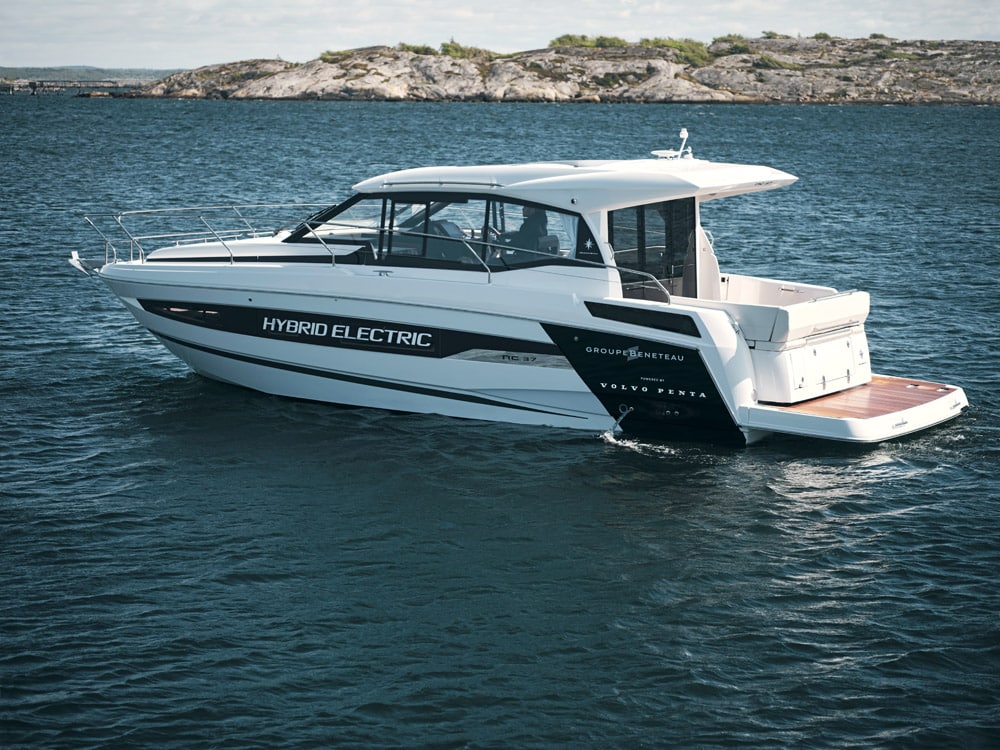PBR’s Mark Featherstone gains access to Volvo’s secret development centre in Sweden to trial what could foreseeably represent a game-changer in propulsion technology for the larger cruiser market.
One of the more memorable experiences I had during my time with the adventurer Steve Fossett was a visit to Lockheed Martin’s experimental establishment in the highly classified Area 51. It was quite a privilege to gain access to this top-secret aircraft design facility known as the ‘Skunk Works’, a remote enclave in the Nevada desert. It was with a certain sense of déjà vu, therefore, that I found myself waiting among a collection of international journalists on a windy dock in Sweden anticipating the occasion of another ‘experimental experience’. As we stood surmising what the day might reveal, out of the morning mist emerged three ghostly-white Beneteau motor cruisers, stealing their way through the cold grey waters toward us. Their mission? To take us to Volvo Penta’s top-secret testing facility outside Krossholmen, an isolated village tucked away within the Gothenburg archipelago.
Anticipation aboard grew as we motored out to the isles, until at last we reached our destination and found ourselves pulling into a dock buzzing with activity and test boats of all types and sizes. Upon disembarking, we began to take in our surroundings. A little way from the shore there lay an inconspicuous, typically Scandinavian set of wooden-clad buildings. Despite their unassuming appearance, I had a hunch that there was little that was ‘typical’ either about them or this place in general.

A centre for innovation and inspiration in the Gothenburg archipelago

Journalists from all over the world assemble for the Volvo reveal
A collaborative approach
Volvo, of course, are leaders in the field of marine propulsion technology. But what I hadn’t appreciated until now was the fact that the Krossholmen facility is actually one of the largest and best equipped of its kind in Europe. And it is from here that, in collaboration with Groupe Beneteau, Volvo have been covertly developing a groundbreaking hybrid electric concept craft – a technology that they hope will take the boating community by storm.
But while the concept is simple to grasp, the development most certainly is not. Indeed, Volvo’s hybrid project has been years in the making, and they freely admit that the dawn of a totally electric cruiser/motor yacht is some years away from becoming a commercial reality. The aim, however, is to provide boat owners with the range and top speed of a combustion engine, but with the silence and zero emissions of batteries.
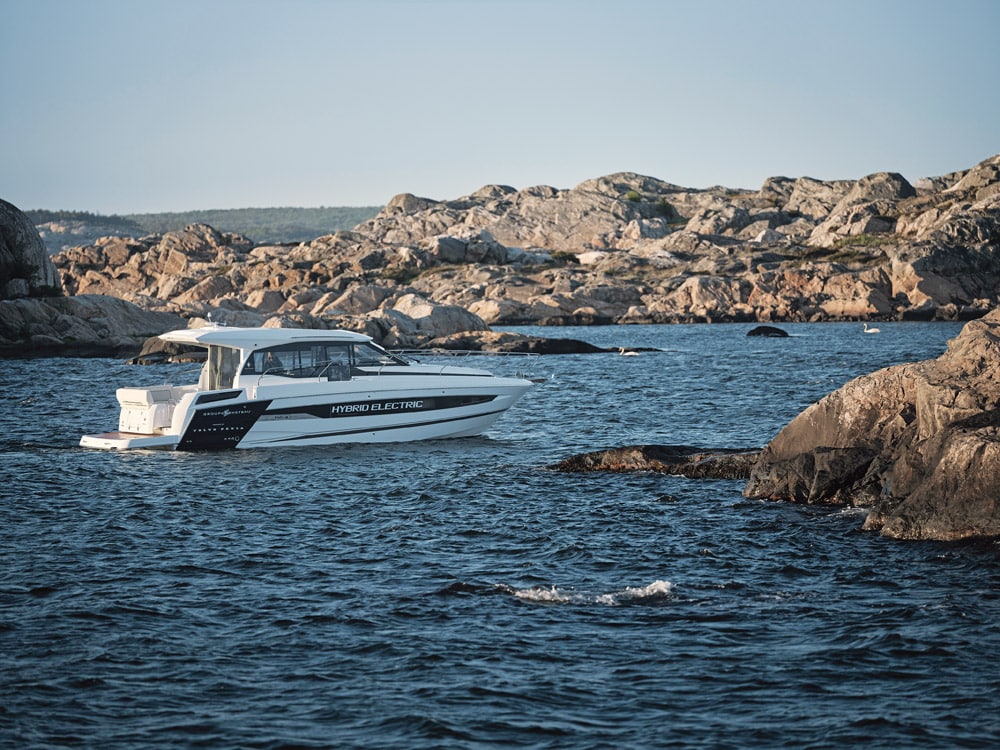
The technology being employed includes a ‘plug-in’ parallel hybrid system that features two Volvo Penta D4-320 engines running alongside two 60kW electric motors offering three driving modes: electric, hybrid and power. This integrated technology, according to its creators, is well ahead of its time and is set apart from its peers in that it allows the boater to shift seamlessly between driving modes, thereby enhancing performance efficiency and, ultimately, comfort on board.
But enough of the theory, because after a full and informative briefing at the shoreside development facility, to the water we did go! The NC37 prototype test vessel was now going to allow, for the very first time, both journalist and project stakeholder alike the opportunity to experience the results of Volvo’s development work first-hand.
At the controls
The combustion engine is started and stopped based on the throttle input, and the engine and batteries then work together, boosting acceleration and/or charging the batteries. During the trial we first powered up onto the plane by means of the engine alone, then repeated the exercise, using the hybrid system. The difference was marked. In fact, when employing the dual system, the Beneteau NC37 prototype test vessel got up onto the plane far quicker and with much greater athleticism than via the engine alone. The impression it gave me was that of a much more powerful, faster accelerating boat altogether.
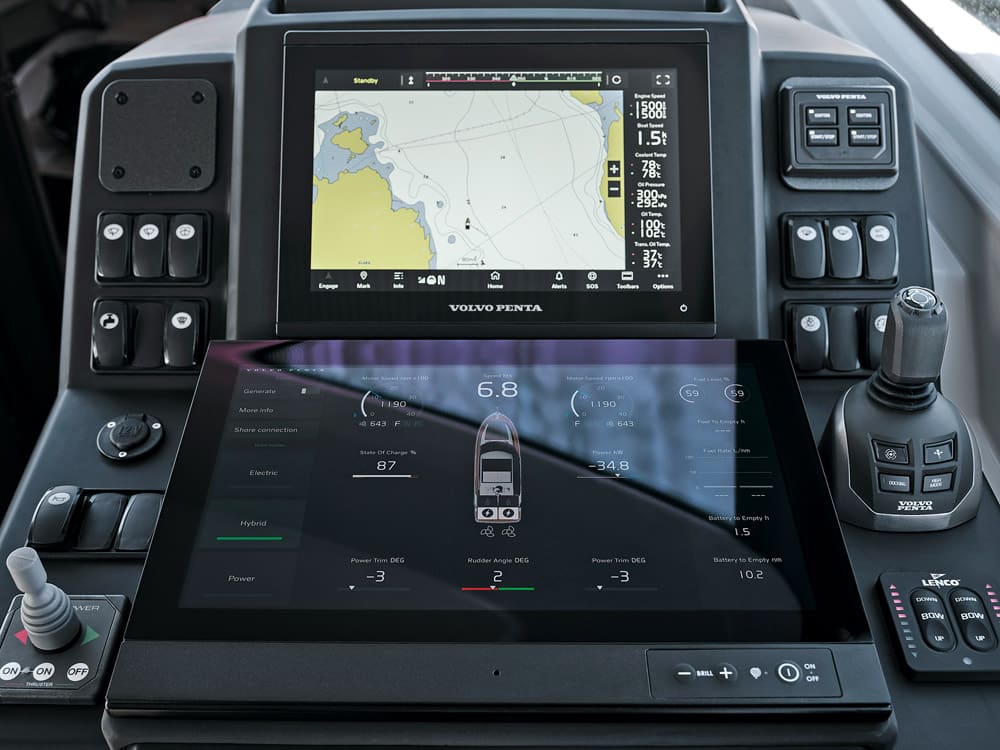
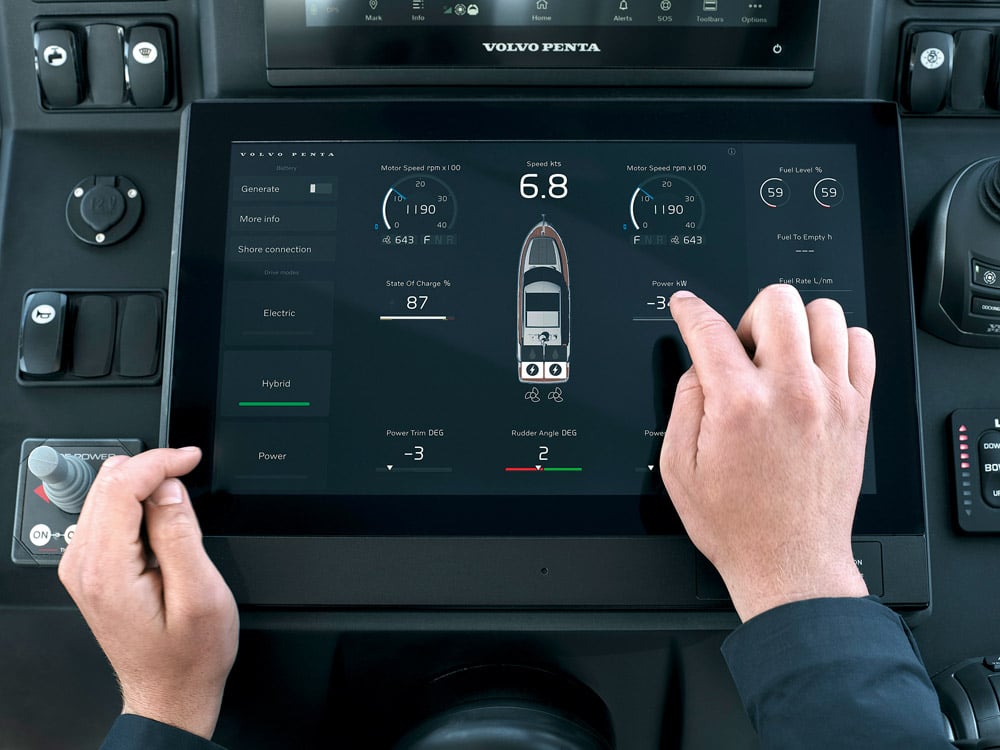
Integrated display enabling monitoring of the hybrid system at a glance.
Our on-water trial also presented the opportunity to become familiar with the NC37’s other helm features, including its joystick docking and dynamic positioning system. In electric mode, the boat handled with much greater precision in terms of its close-quarter manoeuvrability, and it was beautifully easy to use. Being able to give clear instructions to crewmembers without shouting over the noise of the engine is a real positive, and of course, there will be much less disturbance to neighbouring boats when entering a marina late at night.
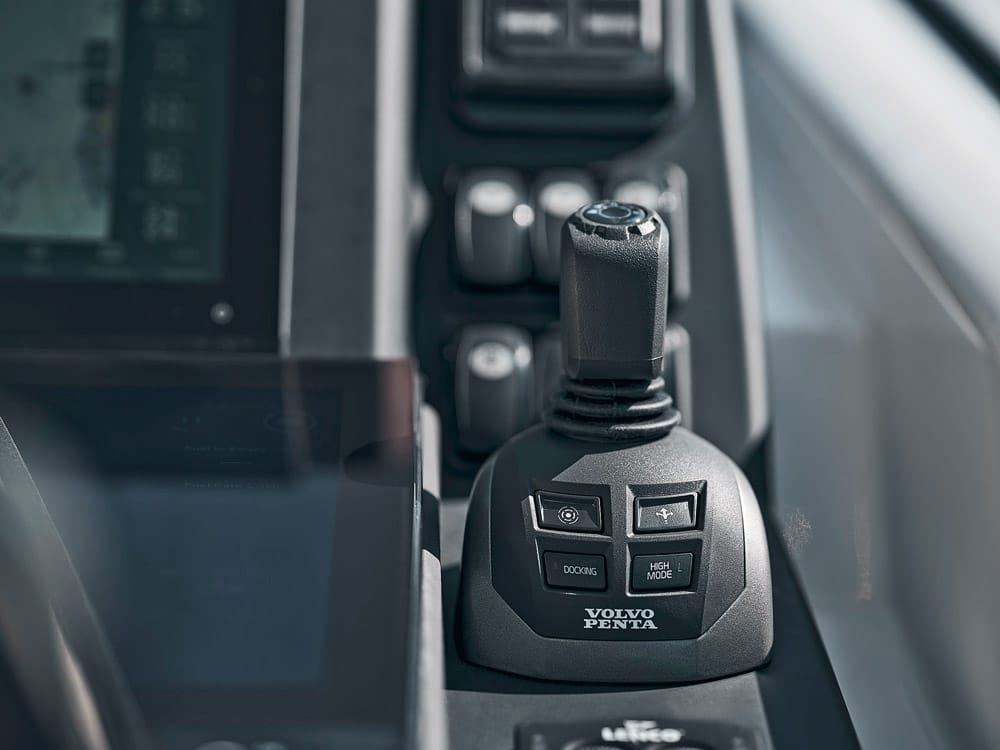
Joystick docking and dynamic positioning system
I really liked having control over driving modes using the joystick and appreciated being able to switch to full combustion power if such was required, say, on a day of strong winds. Another advantage, of course, is the ability to use the battery pack to run the on-board systems without needing to employ the engines. Living in Salcombe as I do, I sometimes feel overwhelmed by the sound of engines on the water at the height of the season, so the hybrid’s advantages also include its considerate ‘neighbourliness’.
Extending adventures
With such a robust battery bank as the one Volvo are employing, greener, more sustainable horizons are extended, offering in the process the opportunity to cruise ‘off grid’ without using a generator or having to kick the engine into life. And just as zero-emission zones are starting to spring up across the UK highway network, similar zones, no doubt, will become the norm for certain sea areas as well. The use of electric hybrid power could therefore allow boats to navigate into environmentally sensitive areas where the likes of a standard combustion-powered craft might well be barred.
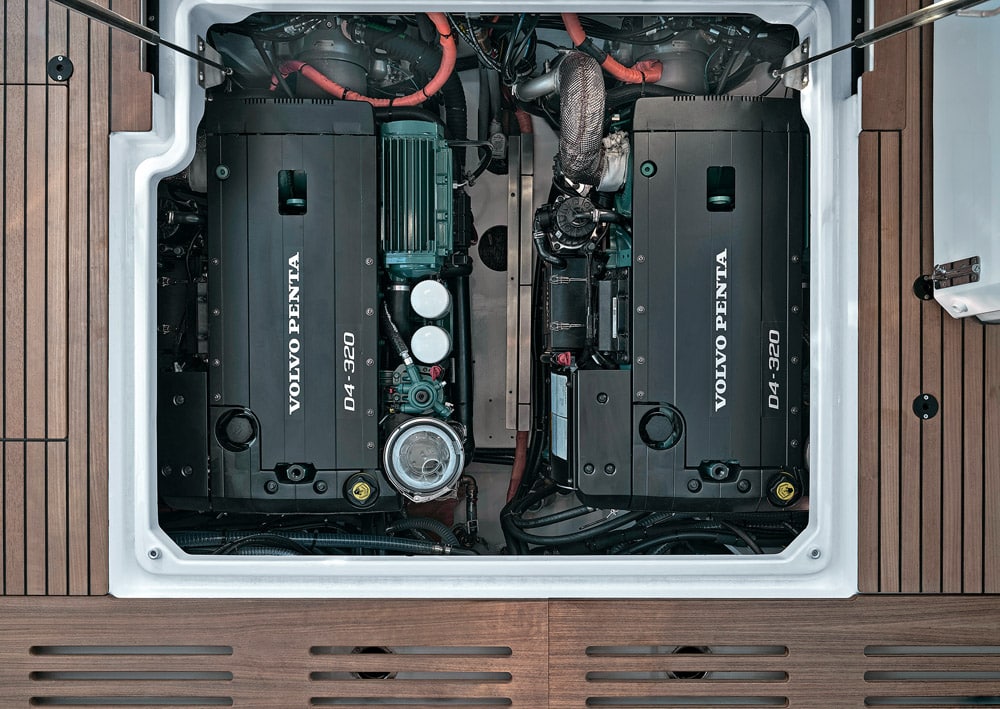
The engine installation looks remarkably conventional at first glance.
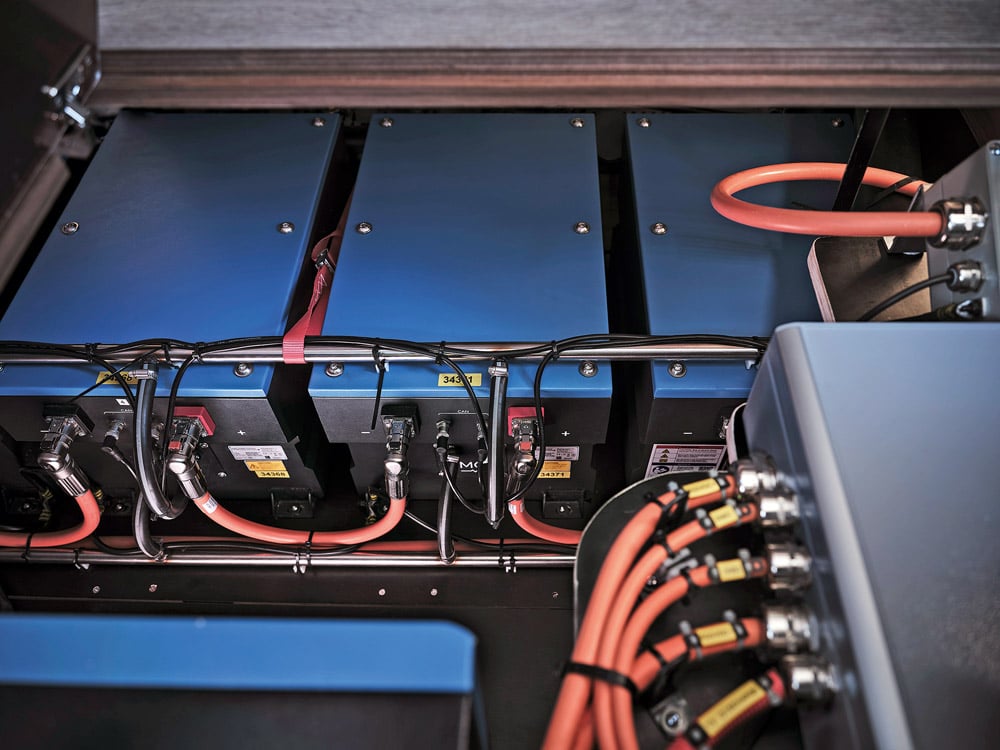
Battery bank situated mid ships giving excellent weight distribution.
Whenever I plan a passage, I always try to have a contingency plan. In my 30 years of serving as an RNLI lifeboatman, I’ve lost count of the number of vessels we’ve rescued suffering some kind of engine failure, which then had to be towed away from a rocky or dangerous lee shore. Speaking personally, I would really appreciate the added security that electric propulsion might offer in these situations. In the event of a main engine failure, the 15nm range and 10-knot performance that the Volvo hybrid technology offers would, in most instances, be enough to get you, your crew and your vessel back to port safely – or, at the very least, allow you to gain greater sea room until help arrived.
Another step forward
It has to be said that Volvo’s hybrid system is ultimately a compromise, but it is, nonetheless, an important stepping stone toward the cruiser market becoming fully electric. However, in this case, I think it works very well indeed, and I can see a great future for such hybrid marine applications in the years to come. The technology to go fully electric isn’t there at present. Improvements in battery production, price and range, as well as in charging systems, all need to be advanced.
Volvo recognise that a multifaceted approach is necessary to achieve zero emissions, and to this end, they are working hard to ready their marine propulsion system for the market, despite the fact that a time frame has not yet been announced. Area 51 was a great breeding ground for aviation technology, and there’s no doubt in my mind that the Volvo research and development centre in Krossholmen is breaking new ground. The special relationship forged with Beneteau and the NC37 ‘test bed’ employed to further Volvo’s studies in this field of marine propulsion are undoubtedly proving invaluable to the process. Here at PBR, we look forward to following this ongoing venture with interest, to the point that, one day, it becomes a commercial reality – for the betterment of all.
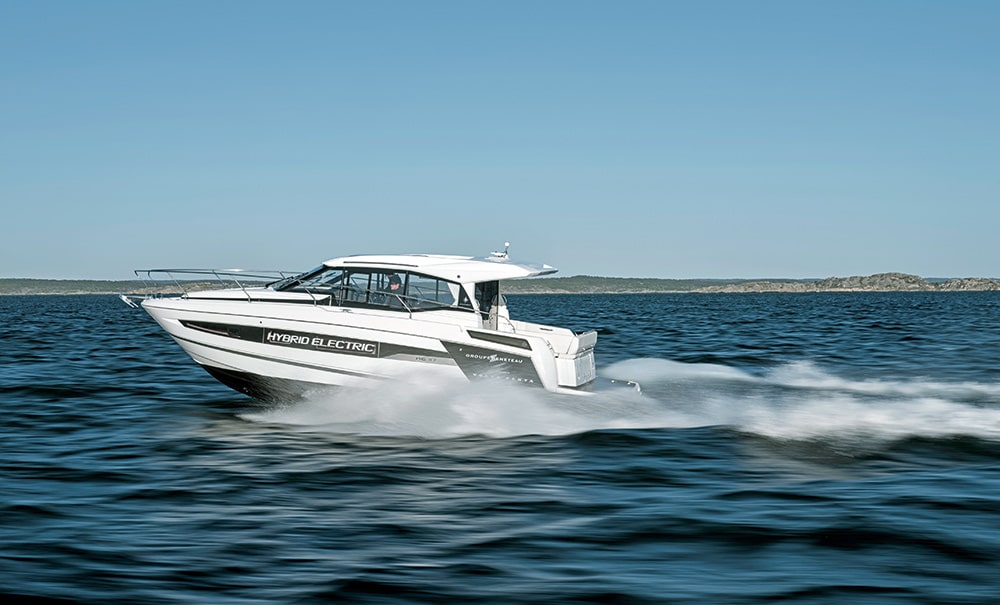
The aim
Volvo and Beneteau have a long history of collaboration and firmly believe in the ‘learning by doing’ philosophy, which is so critical to the advancement of the marine industry in general. The collaborative goal is to unlock new ways of ensuring that water users not only enjoy the water but also treat the environment with greater respect.
Shape of things
Since 2022, a passenger-carrying commercial Marell M15 hybrid craft has been operating in the Norwegian archipelagos in partnership with Hurtigruten Svalbard. It’s a vessel that’s revolutionised the experience – for tourists and wildlife alike – being provided by the operator thanks to its near-silent operation.
Performance
- The NC37 hybrid prototype test craft can achieve a top speed of 35 knots. In pure electric mode, it can cruise at up to 10 knots for 15nm. At a steady and consistent speed of 5 knots, it has around 3 hours of travel time.
Batteries and charging
- Total continuous power: 2 x 60kW
- Total energy storage capacity: 67kWh
- Charging from conventional shore power takes 3 to 12 hours, depending on the local power supply (up to 20kW using AC).
- Recharging underway using the Volvo Penta engines delivers 20kW of charge.
- Recharging when moored or at a standstill delivers 60kW of charge in a single hour.
Combustion engines
- 2 x D4-320 with a power of 235kW each (2 x 320hp)
Transmission
- 2 x DPI Aquamatic sterndrive

